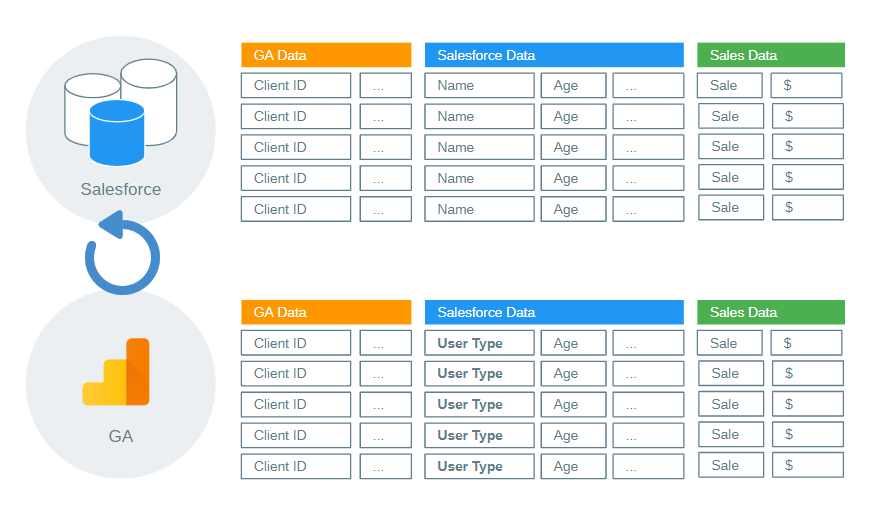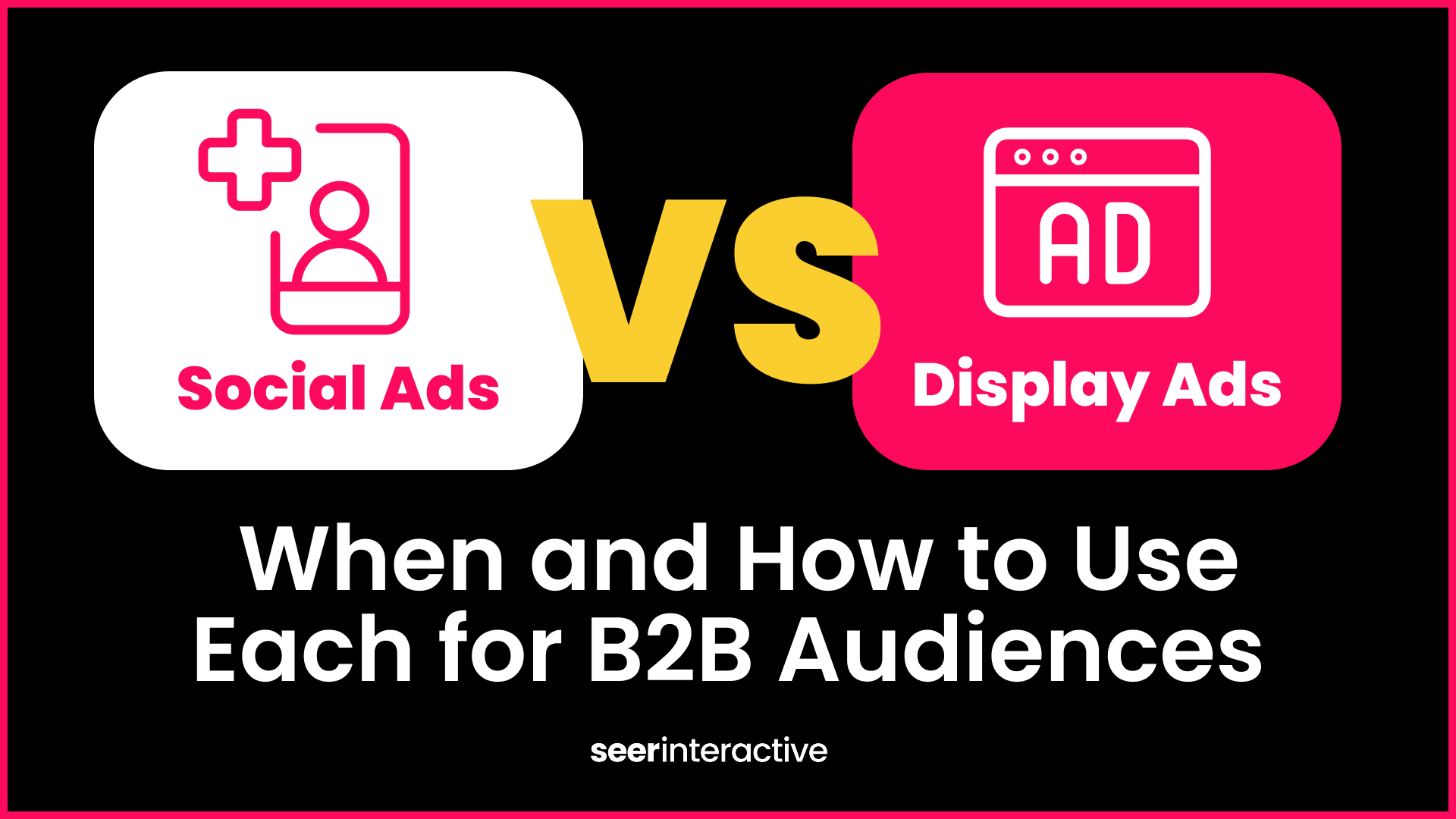Introduction
Combining your CRM data with your Google Ads data is absolutely critical when managing a Google Ads account.
At the end of the day, we want to measure success by tying back our digital marketing efforts to the bottom line of a particular business. We all know executives’ biggest focus is bottom-line growth and connecting your CRM to Google Ads will empower you to provide this insight!
For example, you’ve set up conversion tracking to measure ‘contact us’ form submissions and you quantify those form submissions as leads which then funnel into a business’s CRM.
In this example, you’ve identified two keywords that drive a majority of leads and therefore you increase bids on both keywords. Without CRM data connected to Google Ads data, you’re in fact optimizing directionally because you truly have no idea the revenue these keywords are driving.
Therefore, connecting your CRM data to Google Ads data will provide insights into which keywords or campaigns to optimize based on which drive the most qualified leads and most importantly, revenue. Without this connection, you’re in the dark and this could be the difference-maker in whether that CMO continues the engagement or not.
In this blog, you’ll learn a few different ways on how you can connect the two and ultimately tie your marketing efforts back to the bottom line.

Step 0: Make Sure You Have Proper UTMs in Place
Before we dive into the tactical implementation, the ground zero place where you need to begin is ensuring you have properly implemented UTM tracking within your campaigns.
The entire purpose of connecting CRM and Google Ads data is tying back revenue to specific campaigns & keywords. This not only allows you as the digital marketer to prove your worth to your client but also provides you insights into your “money” keywords to optimize bids.
Not familiar with UTM parameters? Here’s an informative guide to properly set those up for your campaigns.
First Method: Utilize An Automated Reporting Tool
This first method utilizes a third-party reporting automation tool and here at Seer, we use SuperMetrics for our data pulls.
Remember when we mentioned those UTMs? Well, this is the first example of how UTMs play a MAJOR role in tying back campaign & keyword-level leads to your CRM’s leads.
First, you’ll want to speak with your client about having them share their CRM data on a cadence that works for your engagement. Once you receive your CRM data, depending on how your UTMs have been constructed, there will be columns for UTM parameters such as “UTM_Campname” which in our case, houses the campaign that the lead originated from. We also have “UTM_Term” which pulls in the keyword the lead came from and lastly, we have a “UTM_Source” to differentiate between Google Ads & Microsoft Ads.
BAM, the first step is complete! Now the next step you’ll need to accomplish is utilizing a reporting automation tool that can pull your Google Ads metrics into a Google Sheet or Excel sheet and this is where the magic happens.
Once you’ve set up those UTMs and have your CRM data and a reporting automation tool pulling your Google Ads metrics into a collaborative sheet, is where the data can be paired. Here at Seer, we report on campaign-level as well as keyword-level data. Therefore, we utilize simple vlookups and sumif statements to pair our campaign/keyword CRM leads to our Google Ads data to report on clicks, impressions, CPLs and things of that nature.
By combining your CRM lead data with your Google Ads data within a collaborative sheet, you are able to get specific metrics that you know you can trust. These metrics are backed by your CRM data and should be your North Star for optimizing.
Advanced Reporting: Custom Queries
Most sales processes are complex with more than one step involved. Lucky for you there is a way to report on every step in your sales funnel!
Let’s say you have a 3-step sales funnel: e-book downloaded, lead submitted, deal closed. To report on the date each step was completed, the GROUP BY function will be your best friend. Whether you’re using SQL or Power Query for Excel or any other tool, the logic of your queries remain the same. We’ll demonstrate with leads submitted:
1. Separate each step of your sales funnel into its own table, removing the columns associated with the other steps. The only date column you should have is the date the lead was submitted.
2. In each table group by the date counting how many leads were submitted on each unique date.
 3. You may also want to group by campaign, engine, or even keyword depending on how granular your reporting and UTMs are
3. You may also want to group by campaign, engine, or even keyword depending on how granular your reporting and UTMs are
4. Repeat this for each step in your sales cycle
5. Now it’s time to combine all the separate steps into your final Output Table:
- Create an output table that has one column of every unique date in your data file. You can also include other non-date columns such as campaign
- Merge all the data from your separate tables that match the unique date starting with the first step in the sales cycle. In our example you would merge the output table with the e-book table first, the lead submission table second, and the deal closed table last

Voila! You now have one table with all the information you need. Just refresh these queries next month and you’ll have all the information you need.
Top-Tier Solution: Closed-Loop Reporting & GA360
All of the solutions referenced are great for reporting, but as marketers, we want to be able to use CRM information in real time. Imagine a world where you could allocate budgets or update bids based on what drives the most qualified leads in your CRM data. Thankfully, there are ways we can achieve this, with the first being Closed Loop Analytics.
In a nutshell, closed-loop allows you to see every aspect of your sales funnel both in your CRM system and within Google Analytics. Once you have this information in GA you can see the user’s path to a purchase or build audiences based on their position in the sales funnel. The possibilities are really endless. Our killer analytics team can provide you with even more information on closed-loop analytics.

To take this data even further, consider investing in GA360. If you’re struggling to tie offline sales to online marketing or can’t seem to tie an ROI to your marketing investment, GA360 can help. In addition to its many other amazing benefits, GA360 also has native integration with many CRM systems like Salesforce.
Don’t trust us? See why our VP of Analytics thinks you should invest in GA360.
Now That You Have the Data, Use it!
If you invest the time to set up one of these automated reporting tactics, you’ll never have to manually make changes to the CRM data file again. By automating your report you’ll save you and your team so much time in the long run!
Your team can now spend their time analyzing the value of this data and developing strategy. Is there a keyword that's driving lead volume but those leads aren’t qualified? Now you have a way to identify this at scale.
See how our clients are using CRM data to inform their marketing strategy. Want to integrate your CRM data into your paid marketing strategy? Contact our Paid Media team to learn more.


